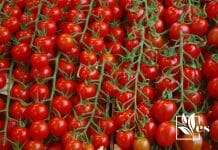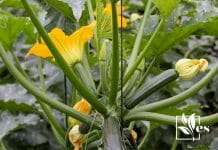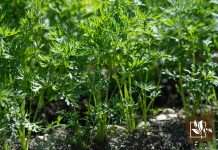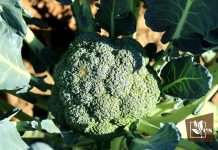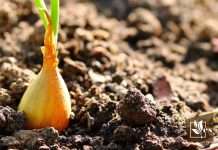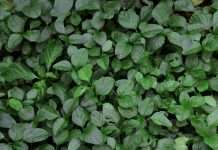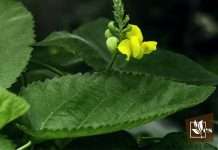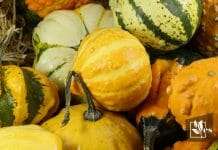- 6 Cactus Plants With Pink Flowers: Stunning & Little Effort - March 28, 2024
- 6 Alternative To String Trimmer: Useful Common Options - March 28, 2024
- Oil Coming Out of Lawn Mower Exhaust? Reasons and Fixes - March 28, 2024
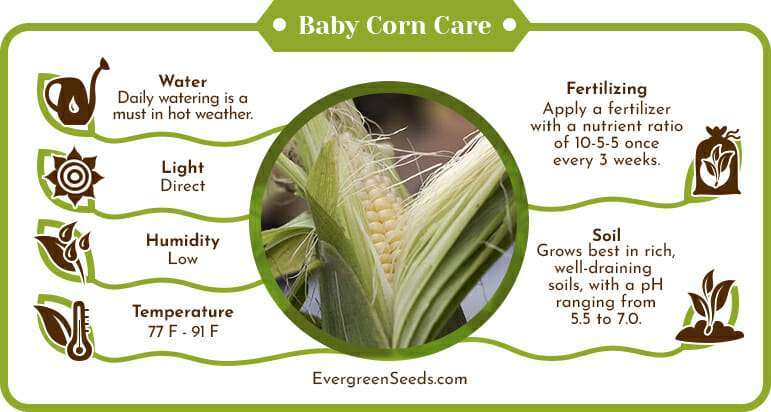 Baby corn of the Poaceae family, also known as tiny corn, young corn, small corn, or cornlets, adds a splash of color and a crunchy bite to any great stir-fry.
Baby corn of the Poaceae family, also known as tiny corn, young corn, small corn, or cornlets, adds a splash of color and a crunchy bite to any great stir-fry.
It can be challenging to find it fresh, but our experts reveal how easy it is to grow this Zea genus plant at home in this guide.
No yard?
No problem, with this baby corn growing guide, anyone can grow this tasty treat!
JUMP TO TOPIC
What is baby corn?
Baby corn is the immature cob of the corn plant. The plant’s female flowers produce it, and, unlike the mature corn cobs, it is harvested when it is only a few inches long before it has had a chance to be pollinated.
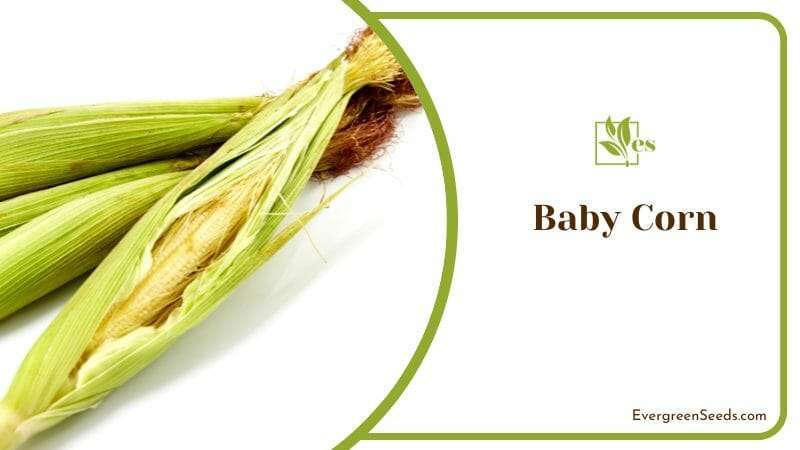
Baby corn is a very popular addition to many Asian-style dishes, especially stir-fries, providing a mild flavor and texture touch.
Where does baby corn come from?
Most of the baby corn you will find in restaurants and supermarkets isn’t grown in the United States or Europe. Baby corn is usually imported from Southeast Asia, especially Thailand, but also Indonesia and Taiwan. The process of growing baby corn is labor-intensive and relies heavily on manual harvesting. As a result, it’s not a very popular or commercially feasible crop in most countries.
Given that it’s shipped from halfway around the world before it reaches your plate, baby corn is rarely found fresh in local markets. You are more likely to find these miniature corn cobs either frozen or sold in jars and cans, usually in a sweet or salty water-based solution.
Luckily, growing your baby corn is quickly done if you have a garden, and it can even be grown in pots or containers. This way, you can enjoy it fresh whenever the mood takes you.
How to grow baby corn
Growing baby corn is similar to growing fully mature corn cobs — but even more manageable. The only difference is the time it takes to reach maturity, which is significantly shorter. You can grow it from any type of corn seed, including multicolored varieties. However, for the best flavor, we recommend growing it from sweet corn kernels.
Let’s take a look at the basics of how to grow your baby sweet corn.
– Growing baby corn outdoors
Before you start sowing your corn kernels in your garden, here are a few tips to bear in mind:
- Corn is a warm-season crop, best grown in late spring or summer;
- It will not tolerate frost;
- Growing baby corn requires less space than growing mature corn cobs;
- This plant loves plenty of sun, water, and nutrients;
- Corn can be a specific target for pests and diseases, so pick varieties that are hardy and resistant to fungal and bacteria problems, and buy your seeds from a reputable vendor.
On average, each corn plant can produce 4 or 5 cobs, although some have a higher yield. If you want to harvest baby corn several times throughout summer, we suggest sowing 2 or 3 crops, two weeks apart.
– How to germinate sweet corn kernels
Germinating sweet corn kernels can be tricky because they are heavily reliant on heat to get going. If temperatures are too low, the kernels can take up to 3 weeks to germinate. As a result, it’s always best to sow the seeds indoors, in compostable seed pots, and transplant them to your garden only after soil temperatures stay above at least 60 °F (16 °C).
Start by soaking the corn seeds in water at room temperature overnight or for a minimum of 8 hours. Prepare several 2 inches (5 cm) tall compostable seed pots, and fill them with a nutrient-rich potting mix. Make a small dip in each one with your finger, place one seed in each pot, and cover it with a type of soil. Use a water pump to mist the pots, keeping the soil moist but not soggy.
Keep your seed pots in a warm and sunny room, where they can get at least 6 hours of light per day. Within a week, you will notice the small leaves of the germinated kernels poking through the soil. Continue watering them regularly until each plant has 4 leaves.
– Transplanting outside
Sweet corn seedlings are exceptionally delicate and can easily suffer transplant shock. Therefore, we recommend keeping them in their compostable pots when planting them in the garden to avoid damaging the roots and stems. Before transplanting, we suggest acclimatizing the young plants by taking them outside for a few hours once temperatures are above 50 °F (10 °C) during the day. Make sure to bring them back inside in the evening!
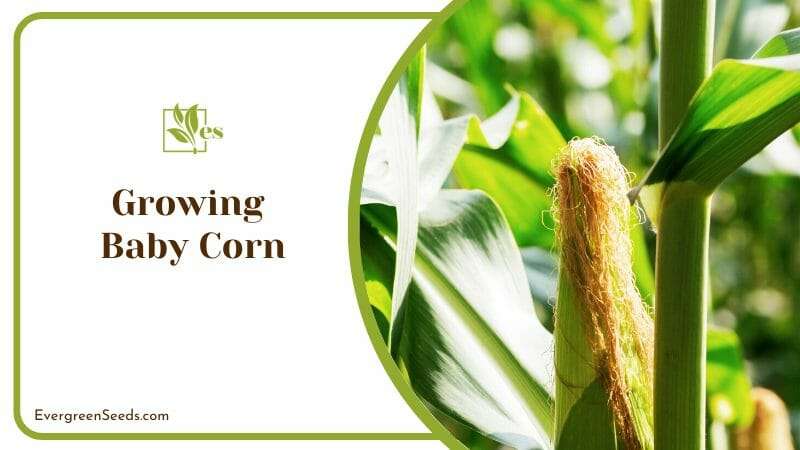
 Location, soil, and watering
Location, soil, and watering
Pick a part of your garden that receives plenty of direct sun for at least 8 hours a day. Corn grows best in rich, well-draining soils, with a pH ranging from 5.5 to 7.0. Prepare the soil in advance, making sure to incorporate plenty of compost or manure and turning it to a depth of around 10 inches (25 cm).
Unlike corn grown for the mature cobs, baby corn requires less space and can even be planted along a fence. This is because the young cobs do not need to be pollinated, which means that you also don’t have to worry about corn ears that aren’t evenly filled. As we said, it’s so much easier than growing actual corn.
Sow your baby sweet corn plants 8 inches (20 cm) apart by placing the compostable seed pot directly in the soil. Water well, and don’t let the soil dry out as the plants become established. These plants have shallow roots, and therefore will not tolerate drought. During scorching weather, daily watering with purified tap water is a must.
 What is the ideal temperature for growing baby corn?
What is the ideal temperature for growing baby corn?
Corn grows best in temperatures ranging from 77 °F to 91 °F (25 °C to 33 °C). Anything above or below that range, and you will notice that the growth will become stunted.
 Fertilizer
Fertilizer
Corn is a type of grass, and like all grasses, it thrives on nitrogen-based fertilizers. Apply a fertilizer with a nutrient ratio of 10-5-5 once every 3 weeks after transplanting the plants to your garden. You can also add mulch to the base of the plants, which will inhibit weeds and help retain the moisture in the soil.
– Corn flowers
Corn plants can grow very fast and very tall, though they won’t typically need support. It’s not uncommon for them to reach heights of up to 8 feet (2.5 meters). About 2 months after they have been sown, the plants produce a tassel-like flower at the top. This is the male flower, which will produce the pollen needed for the mature corn kernels.
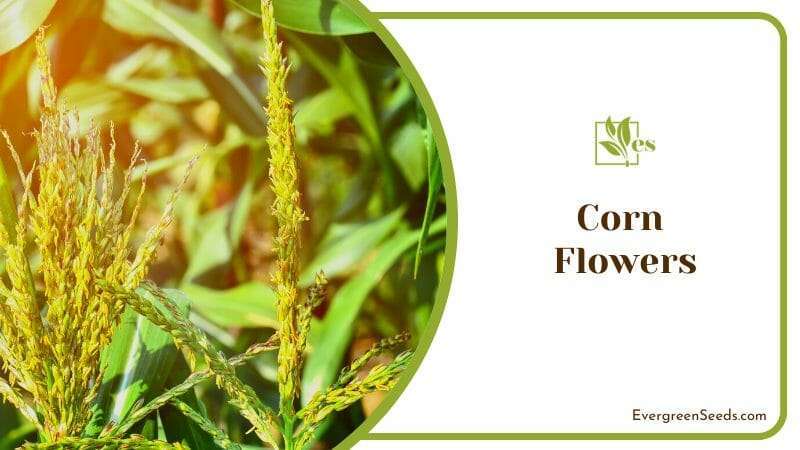
At around the same time, you will also notice the female corn flowers make an appearance.
These grow lower on the stalk, close to the base of the leaves. They are very easy to identify due to the light green ‘silk’ strands emerging from leafy husks. Keep a close eye on the female flowers: once they start popping up, it’s only a matter of days before they are ready to be harvested!
– Common problems and pests
Sweet corn plants are susceptible to numerous pests and problems, especially fungal diseases. Some of the most common ones include common rust, charcoal rot, anthracnose, downy mildew, and leaf blight. On the flip side, the fact that baby corn is harvested early means that you don’t have to worry about earworms, fall armyworms, corn borers, or ear rot.
However, most of the problems you will encounter in your corn plants will require chemical insecticides and pesticides. Our only recommendation is to try to choose corn varieties resistant to diseases and rotate your crops once every 1 or 2 years to avoid further contamination.
Your corn crop will also be susceptible to weeds, which are encouraged to grow around the plants due to the moist soil and the abundant nutrients. We recommend pulling them out by hand rather than using herbicides. However, be careful not to remove weeds too vigorously as you risk damaging the shallow roots of the corn plants in the process.
– Growing baby corn in containers
Baby corn is one of the easiest vegetables you can grow indoors, in containers. It has a shallow root system, so it doesn’t need huge pots. Growing it indoors will also protect it from pests and diseases and be knocked over by the wind. You don’t need to worry about allowing space for pollination, which means you can quickly grow 5 or 6 plants in one pot.
Corn does tend to grow very tall, so if you’re worried about space in your home or on your balcony, we recommend growing smaller varieties. Dwarf sweet corn only grows to a height of 5 feet (1.5 meters), making it easy to manage. As a bonus, it can also work as a houseplant, and you can even use it to form a vertical green wall for privacy.
-
Use the right pot and soil mix
Start by picking at least 20 inches wide container and 12 inches deep (50 x 30 cm), with drainage holes at the bottom. Fill the container with a soil mixture that is nutrient-rich but also well-draining. Loamy soils are a good choice, as they contain enough sand, clay and silt to prevent the plants from becoming waterlogged.
If you’re growing baby corn in containers indoors, you can sow the kernels in the soil directly, without using seed trays or pots. In this case, we suggest sowing around 10 seeds per pot and thinning them out to 5 or 6 plants once they develop two or three sets of leaves each. This will give you some backup in case not all seeds have germinated and allow you to keep the healthier plants.
 Keep them warm and watered
Keep them warm and watered
Keep your container of baby corn plants in a warm and well-lit part of your house. Water regularly, and pay very close attention to the soil moisture levels. Plants grown in containers tend to dry out much quicker than those grown in your garden, so check the soil daily. Apply a nitrogen-rich, liquid fertilizer solution once every three weeks after your corn kernels have germinated.
As with corn grown outdoors, you will notice the male flower’s tassel after about 4 or 6 weeks after the seeds have germinated. The female flowers will appear around the same time. And before you know it, it’s time for the most exciting step: harvesting baby corn.
When to harvest baby corn
Sweet corn can take anywhere between 60 and 100 days to reach maturity, depending on the growing conditions. With baby corn, however, you don’t need to wait that long. Female flowers will start budding as early as 6 weeks after sowing, and once they’re out, you can pick baby corn in as little as 5 days.
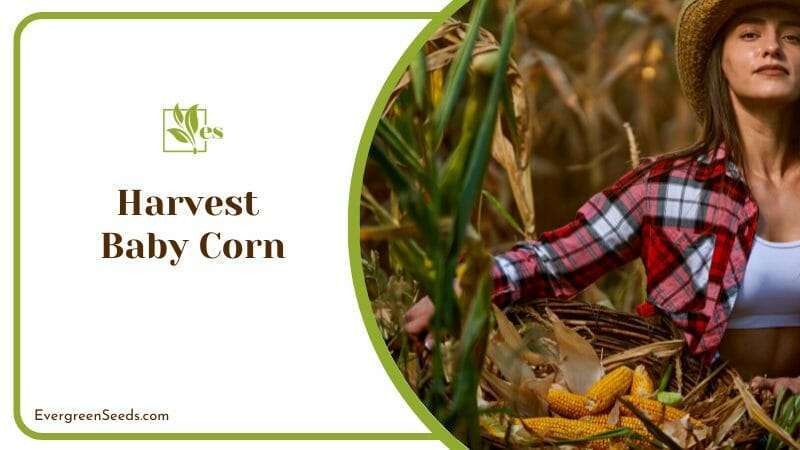
Harvesting baby corn requires perfect timing. Pick them too early, and they will be small and underdeveloped. Wait too long, and they will become tough and starchy. The rule of thumb is to check the little corn heads every day and pick them when they are about 6 inches long (15 cm). At this stage, they should be wrapped in green husks, with a tuft of silk at the end.
– Handle with care
To harvest baby corn, pull back the leaf growing next to the cob. Then, gently twist the cob until it snaps from the main stalk. Remove the green husks and pull out the silks, taking care not to snap the baby corn in the process. Inside, you will find the baby corn cob, covered in row after row of miniature, pale yellow kernels.
If you notice that your small corn cobs are growing dark red or brown silks, that’s a sign that they are too old to be harvested as baby corn. If you’re lucky, there’s a chance that pollination has occurred and that you can harvest mature corn cobs in a few more weeks.
However, corn needs at least 1 foot (30 cm) between plants so that pollination can be successful and performs best when grown in several rows. Our suggestion is to only use this guide for growing and harvesting baby corn.
Once it’s been harvested, baby corn is best eaten fresh, the same day it’s been picked. You can also keep it in the vegetable drawer of your fridge, covered in plastic wrap, for a maximum of 3 days.
Is corn a perennial or annual plant?
Corn is an annual plant that only produces one crop. Once it’s been harvested, we recommend cutting it down and adding it to your compost bin. If you’re thinking about planting corn again next year, it’s worth planting it in a different part of your garden.
Crop rotation is essential in preventing pests and diseases in future plants, which corn is highly susceptible to.
Uses for mini corn cobs
Baby corn is a staple in many Asian dishes. It has a very mild nutty flavor, and it’s commonly used to add a bit of crunchy texture, just like water chestnuts.
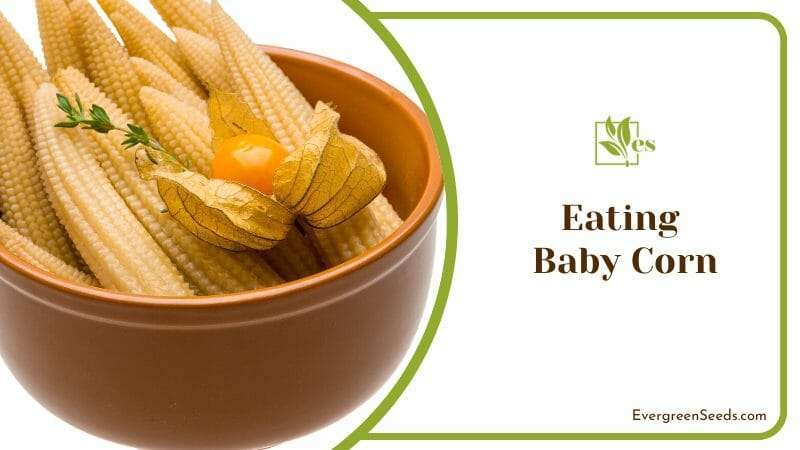
Given that it’s not pollinated, it doesn’t have that sweetness that mature cobs have. Sugars only start building up in the fruit after pollination and fertilization, which is why the taste is very inconspicuous.
Although it doesn’t pack as much flavor as mature corn, baby corn has numerous health benefits. It can even be considered healthier than corn. It has fewer calories, and it is perfect for low-carb diets. It has less sugar than corn, making it a good substitute for corn if you have diabetes. Baby corn is also rich in fiber, vitamins A, E, C, and vitamin B complexes, folate, and minerals such as iron, calcium, and zinc.
You can either eat baby corn raw or cooked. Unlike mature corn, the cob is eaten, so you don’t need to remove the small kernels. Cut the baby corn cobs into bite-size pieces, add them to stir-fries, or enjoy them blanched, boiled, steamed, or braised.
It doesn’t take too long to cook, so 3 to 5 minutes should do the job, depending on how big the pieces are. Or, if you want to enjoy the baby corn whole, you can even throw it on the grill or barbecue, the same way you would with corn cobs.


